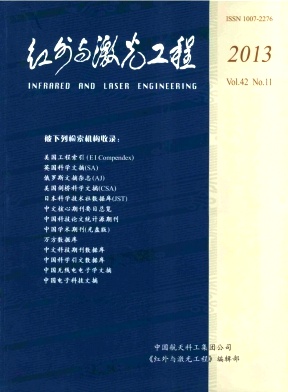|
[1]
|
Itti L, Koch C, Niebur E. A model of saliency-based visual attention for rapid scene analysis[J]. IEEE Transactions on Pattern Analysis and Machine Intelligence, 1998, 20(11): 1254-1259. |
|
[2]
|
|
|
[3]
|
|
|
[4]
|
Goferman S, Zelnik-Manor L, Tal A. Context-aware saliency detection[C]//IEEE Conference on Computer Vision and Pattern Recognition(CVPR), 2010. |
|
[5]
|
Harel J, Koch C, Perona P. Graph-based visual Saliency[C]//Advances in Neural Information Processing Systems(NIPS), 2007. |
|
[6]
|
|
|
[7]
|
|
|
[8]
|
Jian L, Levine M D, Xiangjing A, et al. Saliency detection based on frequency and spatial domain analysis[C]//Conference of British Machine Vision Conference, 2011: 1-15. |
|
[9]
|
|
|
[10]
|
Achanta R, Estrada F. Salient region detection and segmentation[J]. Computer Vision Systems, 2008: 66-75. |
|
[11]
|
Cheng M M, Zhang G X, Mitra N J. Global contrast based salient region detection[C]//IEEE Conference on Computer Vision and Pattern Recognition, 2011: 409-416. |
|
[12]
|
|
|
[13]
|
Bruce N, Tsotsos J K. Saliency, attention, and visual Search: an information theoretic approach[J]. Journal of Vision, 2009, 9(3): 1-24. |
|
[14]
|
|
|
[15]
|
|
|
[16]
|
Radhakrishna Achanta, Appu Shaji, Kevin Smith, et al. SLIC superpixels[R]. EPFL, 2010: 1-14. |
|
[17]
|
|
|
[18]
|
Xie Y, Lu H. Vision saliency detection based on bayesian model[C]//IEEE International Conference on Image Processing (ICIP), 2011: 653 -656. |
|
[19]
|
Liu Z, Xue Y, Yan H, et al. Efficient Saliency detection based on Gaussian models[J]. IET Image Processing, 2011, 5(2): 122-131. |
|
[20]
|
|
|
[21]
|
Meer P, Georgescu B. Edge diction with embedded confidence[C]//IEEE Transactions on Pattern Analysis and Machine Intelligence, 2001, 23(12): 1351-1365. |
|
[22]
|
|
|
[23]
|
Jin Ting, Zhou Fugen, Bai Xiangzhi. Moving object detection in airborne video using kenel density estimation[J]. Infrared and laser Engineering, 2011, 40(1): 153-158. (in Chinese)金挺, 周付根, 白相志. 利用和密度估计的空基视频运动目标检测[J]. 红外与激光工程, 2011, 40(1): 153-158. |
|
[24]
|
|
|
[25]
|
Koene A R, Zhaoping L. Feature-specific interactions in salience from combined feature contrasts: evidence for a bottom-up saliency map in V1[J]. Journal of Vision, 2007, 7(7): 1-14. |
|
[26]
|
|
|
[27]
|
Feng J, Wei Y, Tao L, et al. Salient object detection by composition[C]//IEEE International Conference on Computer Vision, 2011: 2113-2120. |
|
[28]
|
|
|
[29]
|
Long Yunli, Tang hongbin, Xu Hui, et al. Spatial-temporal fused suppressing of infrared clutter based on adaptive regression Markov model[J]. Infrared and laser Engineering, 2012, 41(3): 791-795. (in Chinese) |









 DownLoad:
DownLoad: